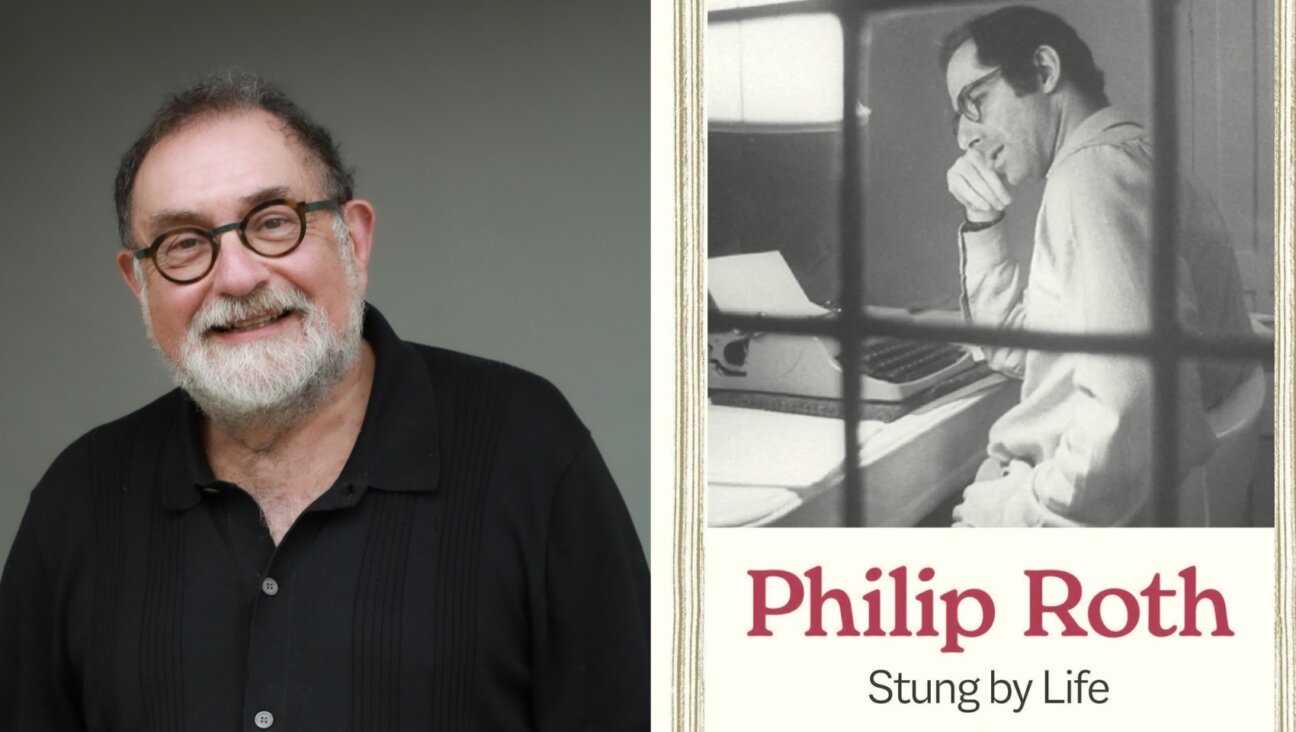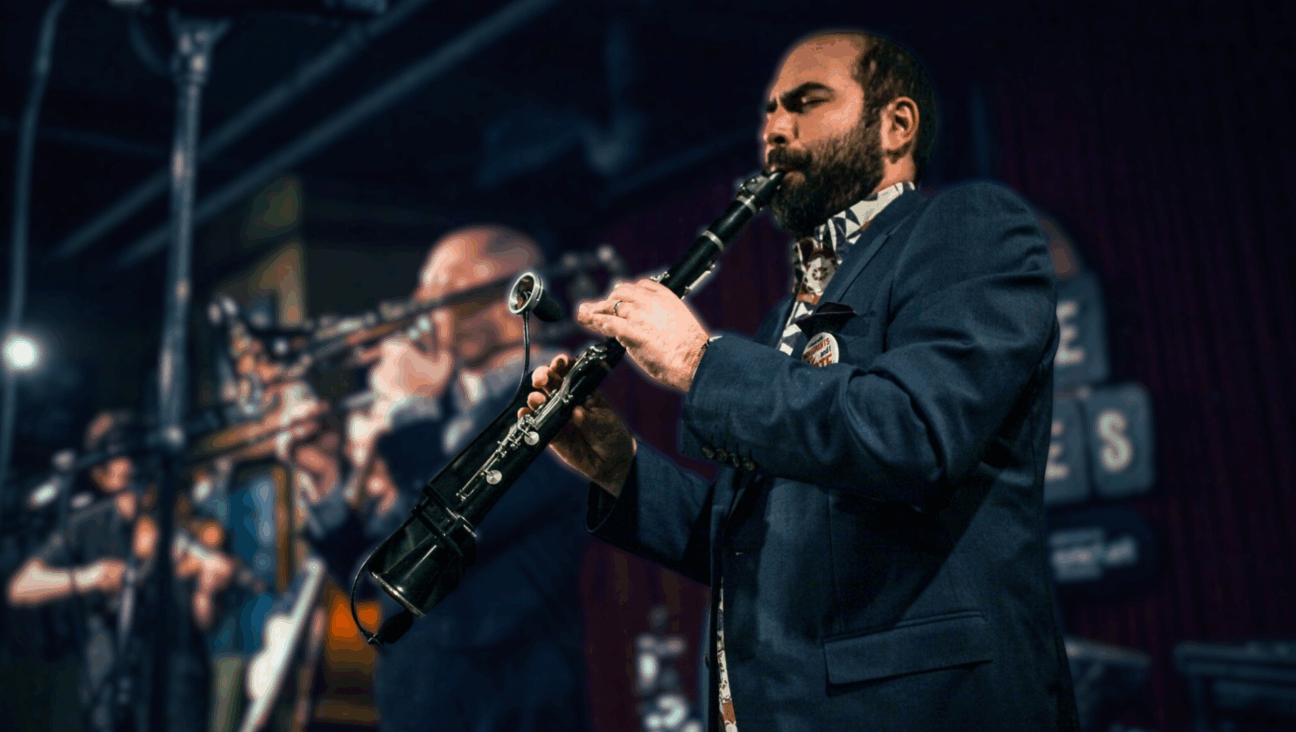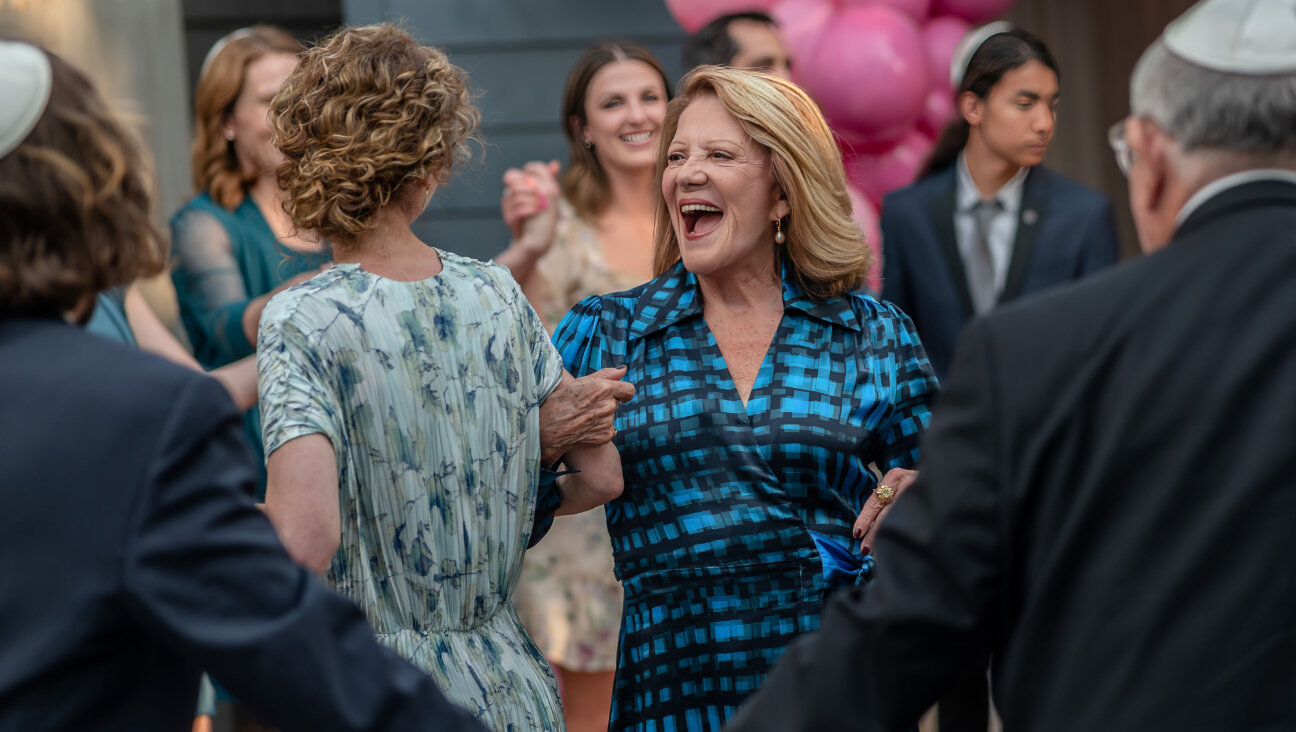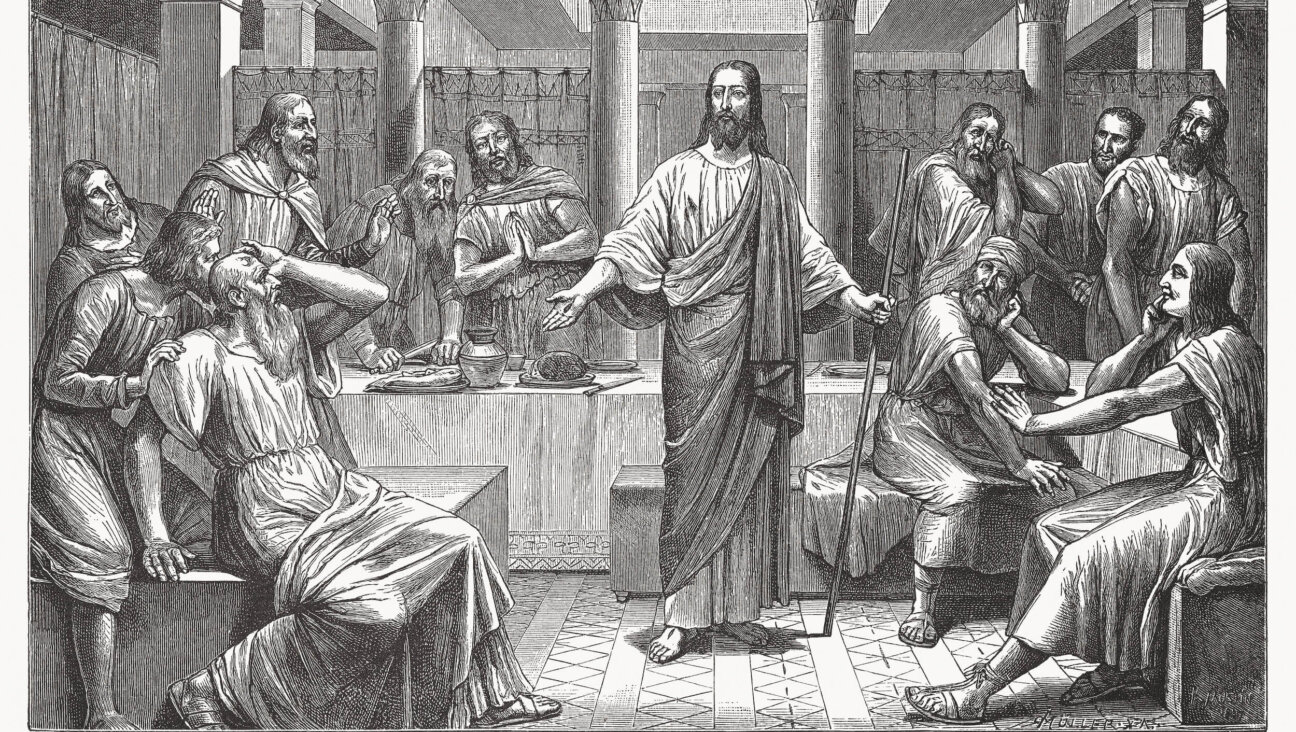On a tour of Hasidic Brooklyn, this rabbi doesn’t have all the answers — but he knows who does
Tour guide Mayer Friedman’s visitors come from Australia, St. Louis, Texas and beyond, and every one is here for a reason
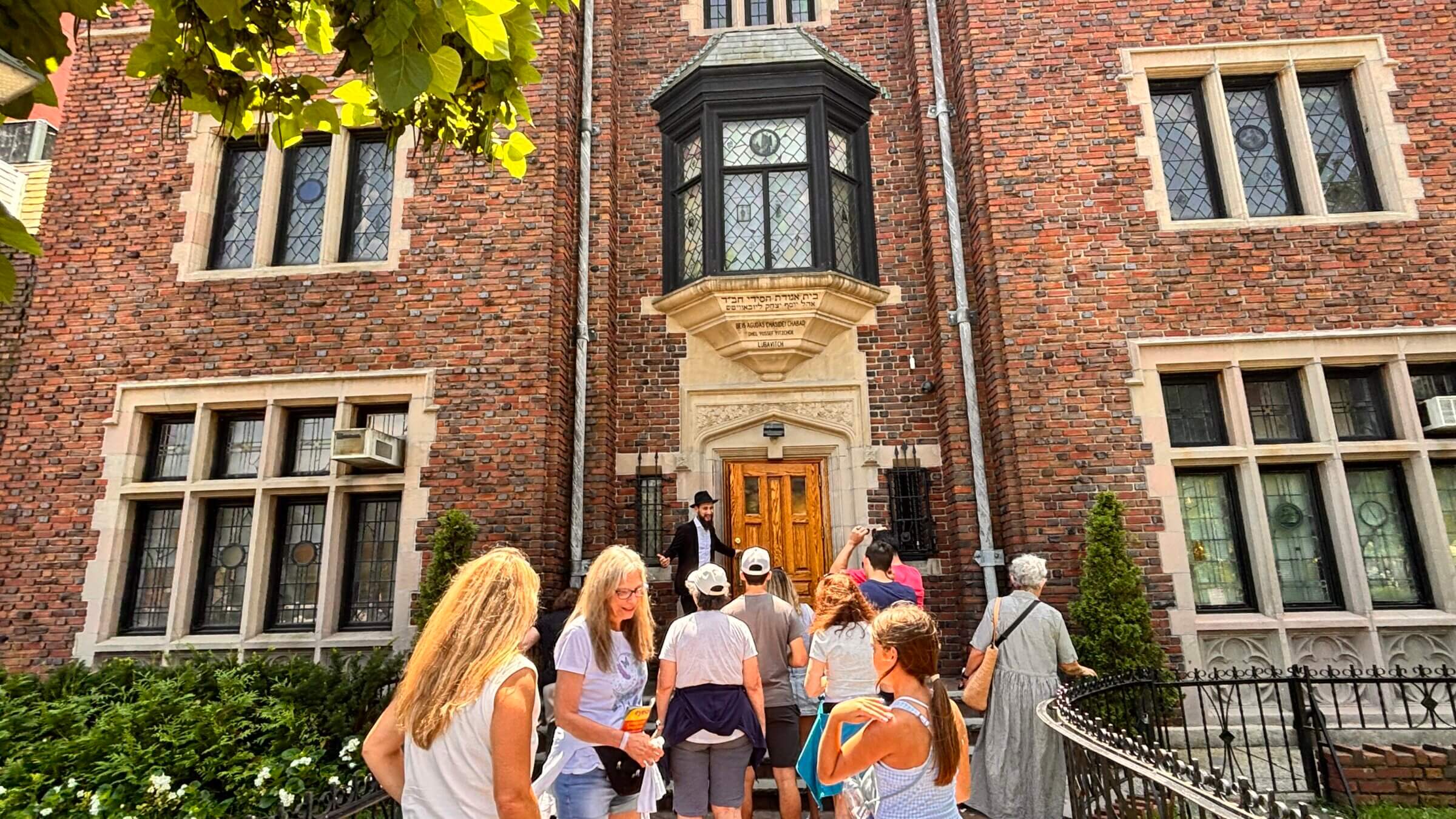
Rabbi Mayer Friedman prepares to lead a group inside 770 Eastern Parkway. Photo by Clara Shapiro
Follow Eastern Parkway past the Brooklyn Museum, the Botanic Garden, the Chabad-Lubavitch headquarters at 770 Eastern Parkway, and you’ll arrive in the heart of Hasidic Crown Heights. The streets are quieter and leafier here. Most of the houses are brick two-levels with a square of lawn in the front, a small balcony jutting out of the upper stories, and an aura of quaint reserve that you usually only find in suburbs.
The people dress modestly. In spite of the heat, the men are bearded, and they wear the black suits, slacks and fedoras of Humphrey Bogart, if Humphrey Bogart also wore tzitzis. The women wear long skirts, long sleeves and tights. Mothers push strollers through the thick July air as though the heat were solid.
One hot Wednesday morning in July, I take the 3 train from Grand Army Plaza to Kingston Avenue, burrowing deeper into Brooklyn. I am heading to the home of Rabbi Mayer Friedman, a 26-year-old Lubavitcher who has been leading tours of Hasidic Crown Heights for the past four years, ever since his brother-in-law Rabbi Yoni Katz, who had begun the “Jewish Brooklyn” tour-guiding project six years earlier, moved to Florida.
When I arrive, panting and schvitzing, there are about eleven other visitors already seated around Friedman’s long dining room table. Spaced along the white tablecloth are three plates of thumbprint cookies with glossy dollops of red jam in the middle. The walls are covered in gilt-framed pictures of family weddings and the Rebbe Schneerson. On one wall towers a floor-to-ceiling bookcase packed with the sleek leatherbound spines of sforim, holy books.
Rabbi Mayer takes his place at the head of the table. He begins to tell us about the yeshiva system, where boys begin learning the Talmud at age three. “Education is about building a person,” he tells us, looking solemnly around the table. “And it doesn’t happen by accident.”
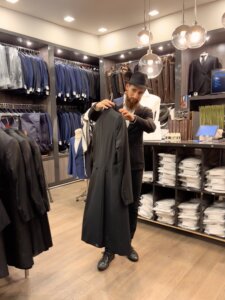
Rabbi Mayer is lean and brown-bearded, and when he looks around at us, the contrast between his calm, level voice and his smiling eyes sometimes gives the impression that we are all children who just did something naughty but amusing. When he talks while sitting down, he has a habit of letting his hands fall with a thump against the arms of his chair, as if to underscore his point. When he talks while standing up, he ends sentences with a single, solid clap.
We go around the table and introduce ourselves. There’s a family from Texas with two daughters and two sons, all buff, blonde and bronzed in a way that fills the vitamin-D-deficient East Coast mind with awe.
Also in our ranks are four older women from St. Louis who are here on a Girls’ Trip. And then there are the lone rangers, me and an elegant older woman named Melinda, who has lived in Australia for decades.
Everybody seems to have come with questions. “Are the women considered inferior?” one of the St. Louis ladies wants to know. Rabbi Mayer looks at her as if she’d asked whether or not Martians keep kosher.
Some questions require a longer reply. Someone asks what Rabbi Mayer thinks about the flooding in Texas. “Is it manmade, the flooding and all that? Or is it God?” The Texan family straightens up in their chairs.
Rabbi Mayer says he doesn’t know the answers, but that God does. Nothing in this world, he says, can happen without God willing to be so. Nothing happens by accident.
He claps his hands together with particular finality. It’s time to get moving!
On the steamy street, we migrate in a pack towards Kingston Avenue, where you can find, among other things, a mikvah, a kosher supermarket called Kol Tuv, a kosher pizza parlor, and Hasidic clothing boutiques. Rabbi Mayer stops in front of Zlata Wigs. Here, married women can buy sheitls of the highest quality, “lace-top wigs” made of real human hair from Brazil. A mane from Zlata can cost nearly $5,000.

Inside the store, the hair hangs long and luxuriant, with fashionable ripples that make my jaw go slack. Zlata herself is a soft-voiced, smiling woman with a sleek sheet of black hair hanging down her back. She and her assistants are combing and curling out wigs tenderly, as if they were grooming pets.
The Texan family’s teenage daughter, who has a cascade of curls herself, asks if you can curl and straighten the wigs just like real hair.
Our next stop is Primo Hatters, a somewhat more macho locale with a whiff of leather in the air. The walls are lined with fedoras and pairs of shiny brogues and loafers.
Rabbi Mayer leads us upstairs, where rows of black kapotas, the long, dark coats that Hasidic men wear after marriage, are gleaming. “First you have to fall in love with marriage before you fall in love with a person,” Rabbi Mayer tells us. He put on a kapota for the first time just a few months ago, when he got married himself.
Back outside, we push through the heat for another few blocks. We turn left on Eastern Parkway, and there it is: 770, the Chabad-Lubavitch Hasidic World Headquarters, the Tudor-style building that has spawned 35 replicas throughout the world, from Buenos Aires to El Paso to Milan.
Rabbi Mayer leads us round the back, where we enter the synagogue balcony through a small door. Below, a masculine hum rises from the men and boys studying around the wooden tables, talking Talmud.
The solitary ones hunch over sforim, foreheads cupped in their hands. They twirl their peyes, turn their pages, and let their cups of coffee go cold beside their elbows. An old man is talking to a little boy across from him soberly and quietly, as if they were the same age. At another table, some young men suddenly explode into a clapping dance and a chorus of “ay, ay, ay”s.

As quietly as we’d come in, we slip back outside. It’s 1 p.m. now, and we are hot, sweaty, and daydreaming about lunch. But Rabbi Mayer says he has one more place to show us. We follow him back to Kingston Avenue. He leads us into a narrow building packed so tightly between its neighbors you might miss it. We climb a crooked flight of steps that coils tightly around itself like a snake. The smell of dust and the tilt of the floor makes me dizzy.
We emerge into a cluttered room harsh with white fluorescent light. There are Torahs everywhere, some bundled along the shelves, some unfurled across the wooden work tables. In the back of the room, two men are bent over their scrolls, working in silence. These are the sofers, the Torah scribes. They barely look up when we come in. They are busy dotting shins and sins, giving dalets a little extra overhang on the top so that they don’t get mistaken for reishs.

It doesn’t seem to matter how much we rustle around, murmuring amongst ourselves and making the floorboards creak. The sofers are orbiting somewhere far beyond our reach.
I think of the men we saw studying in the synagogue at 770. They had also inhabited another realm, one I could never hope to penetrate even if I jumped off the balcony and crash-landed in the middle of the bimah. Yet watching from the balcony, weren’t we doing the same thing as the men below? In one way or another, we had all come to this place seeking some form of education. We were crossing paths on the lifelong process of learning, of building a person. None of us could have come here by accident.
